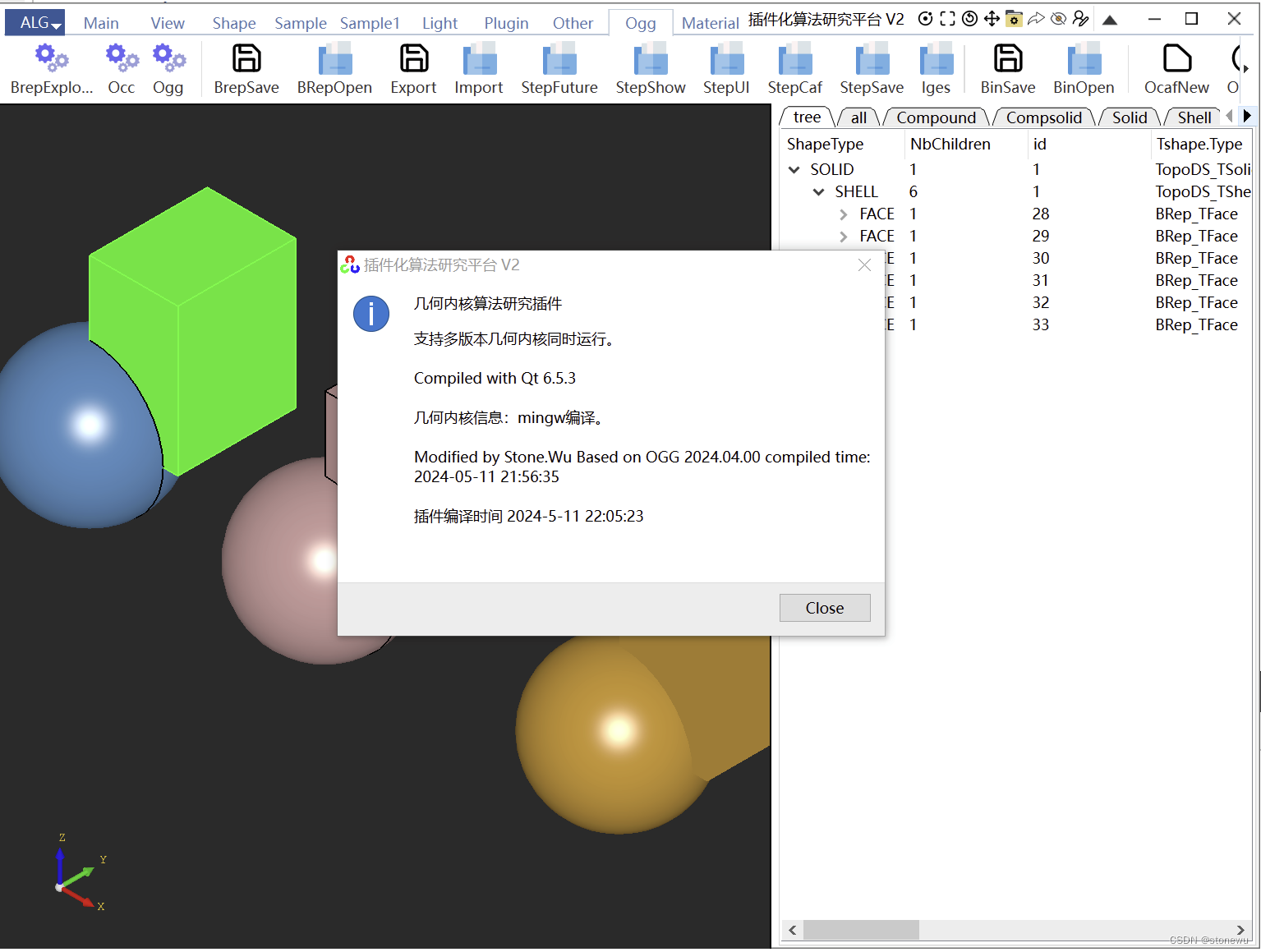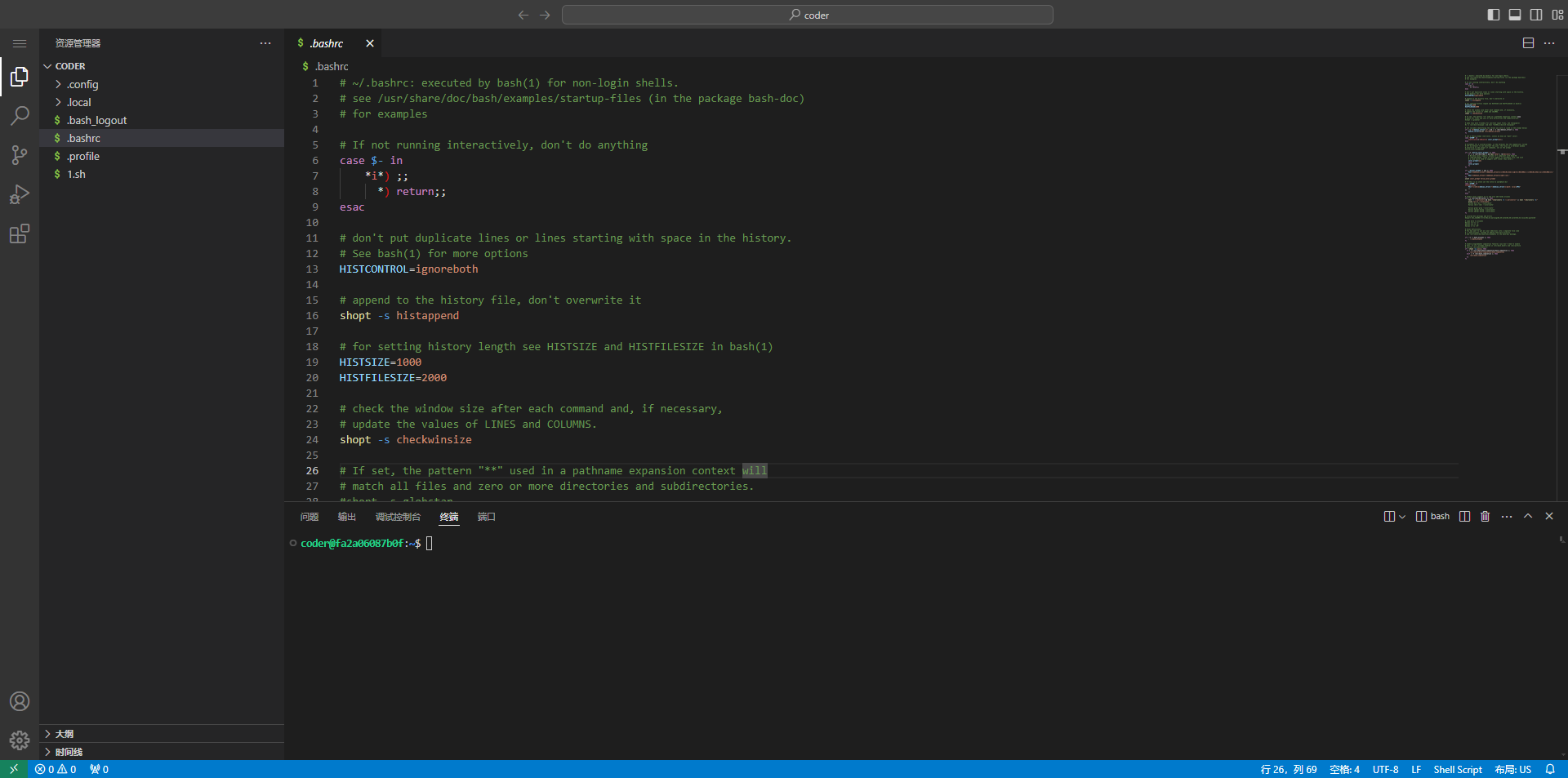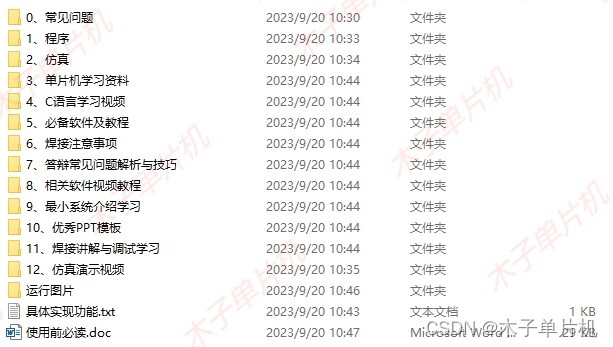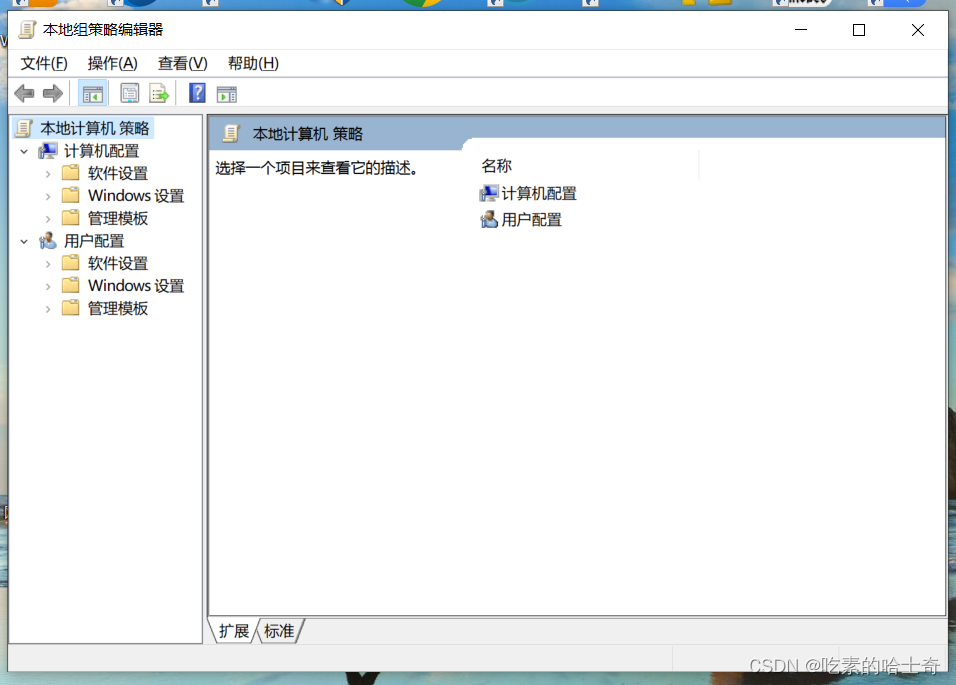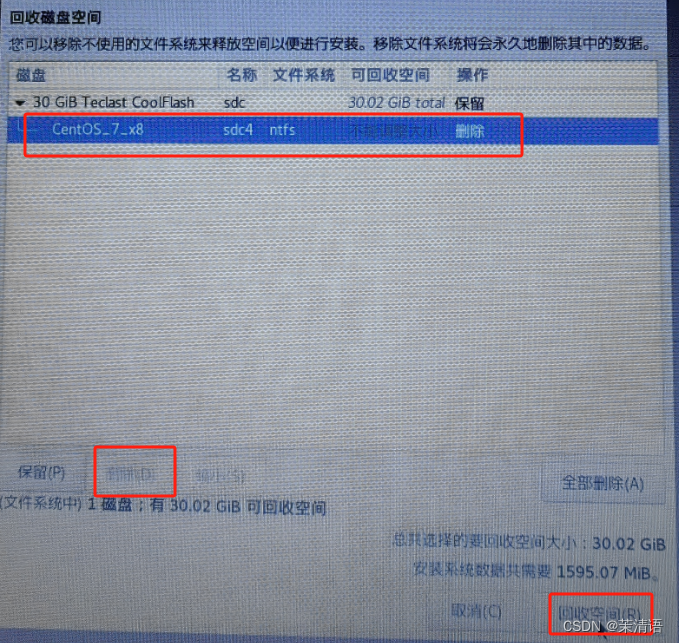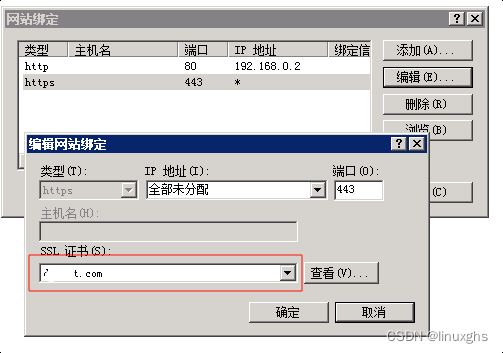Logistic回归模型
- 概念
- 理论分析
- 模型评估
- 混淆矩阵
- ROC曲线
- KS曲线
- 函数
- 示例
概念
之前的回归的变量是连续的数值变量;而Logistics回归是二元离散值,用来解决二分类问题。
理论分析

上式中的hβ(X)也被称为Loqistic回归模型,它是将线性回归模型的预测值经过非线性的Logit函数转换为[0,1]之间的概率值。
其函数图像为:

其中,z∈(-∞,+∞)。当z趋于正无穷大时,e**-z将趋于0,进而导致g(z)逼近于1;相反,当z趋于负无穷大时,e**-z会趋于正无穷大,最终导致g(z)逼近于0;当z=0时,e**-z=1,所以得到g(z)=0.5。
我们对模型进行转化:

参数求解过程:
不难发现y=1的时候为p,y=0的时候为1-p,那么可以等价为(将离散状态变为函数状态)

进行极大似然估计(因为没有残差函数):
构造似然函数,有n行数据,每行数据的概率发生累乘起来
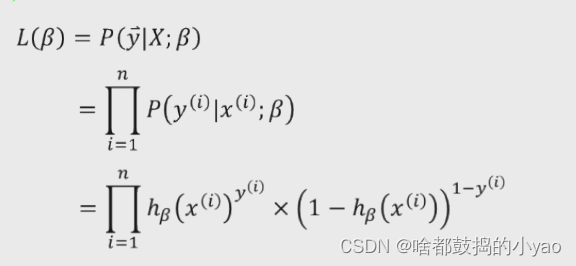
我们对其进行对数化,优化计算:
log(x1x2x3)=logx1+logx2+logx3
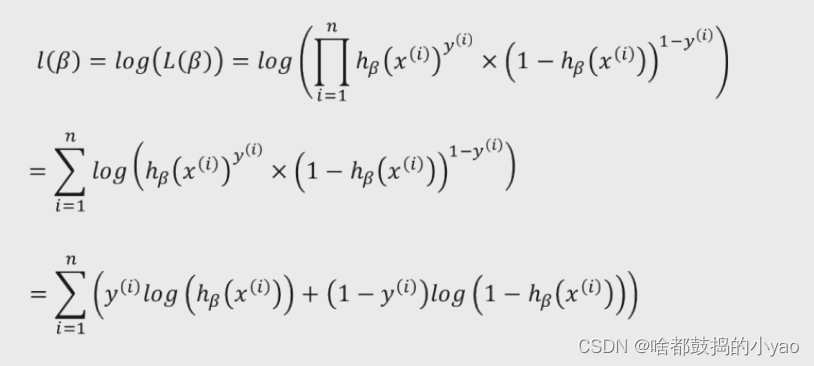
梯度下降:
我们只需要将其变为负数,就有极大求为了极小值,通过此来进行梯度下降的算法。

对其求偏导,每一个参数β做梯度下降

其中,α为学习率,也称为参数βj变化的步长,通常步长可以取0.1,0.05,0.01等。如果设置的α过小,会导致βj变化微小,需要经过多次迭代,收敛速度过慢;但如果设置的过大,就很难得到理想的βj值,进而导致目标函数可能是局部最小。
求出的参数含义:
通过建模可以得到对应的系数B和,则假设影响是否患癌的因素有性别和肿瘤两个变量Logistic回归模型可以按照事件发生比的形式改写为:

其中p/(1-p)叫优势比/发生比。
分别以性别变量x1和肿瘤体积变量x2为例,解释系数β1和β2的含义。假设性别中男用1表示,女用0表示,则:

所以,性别变量的发生比率为e** β1,表示男性患癌的发生比约为女性患癌发生比的e**β1倍。
对于连续型的自变量而言,参数解释类似,假设肿瘤体积为Volum0,当肿瘤体积增加1个单位时体积为Volum0+1,则:

所以,在其他变量不变的情况下,肿瘤体积每增加一个单位,将会使患癌发生比变化e**β2倍。
模型评估
混淆矩阵

A:表示正确预测负例的样本个数,用TN表示。
B:表示预测为负例但实际为正例的个数,用FN表示。
C:表示预测为正例但实际为负例的个数,用FP表示。
D:表示正确预测正例的样本个数,用TP表示。
准确率:表示正确预测的正负例样本数与所有样本数量的比值,即(A+D)/(A+B+C+D)。
正例覆盖率:表示正确预测的正例数在实际正例数中的比例,即D/(B+D)。
负例覆盖率:表示正确预测的负例数在实际负例数中的比例,即A/(A+C)。
正例命中率:表示正确预测的正例数在预测正例数中的比例,即D/(C+D),
正例:指的是非常关心的例子叫做正例,这里面就是恶性。
ROC曲线
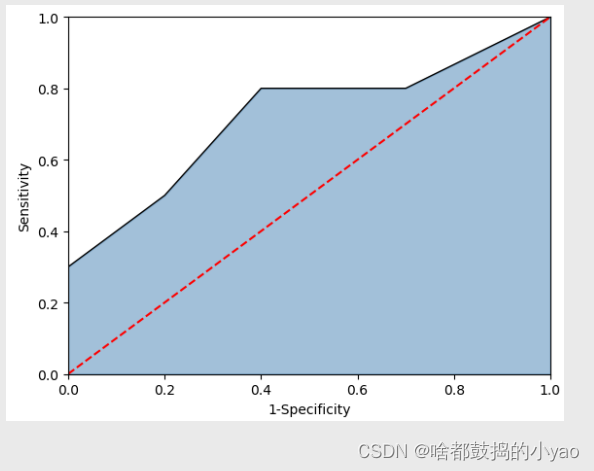
图中的红色线为参考线,即在不使用模型的情况下,Sensitivity(正例覆盖率) 和 1-Specificity(1-负例覆盖率) 之比恒等于 1。通常绘制ROC曲线,不仅仅是得到左侧的图形,更重要的是计算折线下的面积,即图中的阴影部分,这个面积称为AUC。在做模型评估时,希望AUC的值越大越好,通常情况下,当AUC在0.8以上时,模型就基本可以接受了。
KS曲线
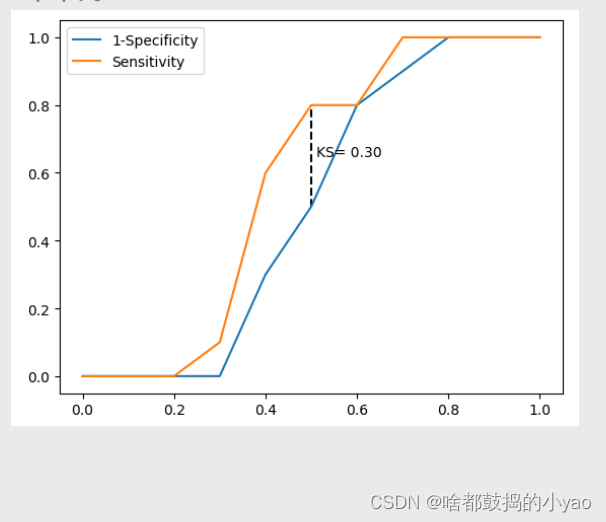
x轴叫阈值,图中的两条折线分别代表各分位点下的正例覆盖率和1-负例覆盖率,通过两条曲线很难对模型的好坏做评估,一般会选用最大的KS值作为衡量指标。KS的计算公式为:KS = Sensitivity-(1- Specificity) = Sensitivity+ Specificity-1。对于KS值而言,也是希望越大越好,通常情况下,当KS值大于0.4时,模型基本可以接受。
函数
LogisticRegression(tol=0.0001, fit_intercept=True,class_weight=None, max_iter=100)
tol:用于指定模型跌倒收敛的阈值
fit_intercept:bool类型参数,是否拟合模型的截距项,默认为True
class_weight:用于指定因变量类别的权重,如果为字典,则通过字典的形式{class_label:weight}传递每个类别的权重;如果为字符串’balanced’,则每个分类的权重与实际样本中的比例成反比,当各分类存在严重不平衡时,设置为’balanced’会比较好;如果为None,则表示每个分类的权重相等
max_iter:指定模型求解过程中的最大迭代次数, 默认为100
示例
- 我们先进行数据训练
# 导入第三方模块
import pandas as pd
import numpy as np
from sklearn import model_selection
from sklearn import linear_model
# 读取数据
sports = pd.read_csv(r'D:\pythonProject\data\Run or Walk.csv')
# 提取出所有自变量名称
predictors = sports.columns[4:]
# 构建自变量矩阵
X = sports.loc[:,predictors]
# 提取y变量值
y = sports.activity
# 将数据集拆分为训练集和测试集
X_train, X_test, y_train, y_test = model_selection.train_test_split(X, y, test_size = 0.25, random_state = 1234)
# 利用训练集建模
sklearn_logistic = linear_model.LogisticRegression()
sklearn_logistic.fit(X_train, y_train)
# 返回模型的各个参数(截距项和偏回归系数)
print(sklearn_logistic.intercept_, sklearn_logistic.coef_)
输出:
[4.36637441] [[ 0.48695898 6.87517973 -2.44872468 -0.01385936 -0.16085022 0.13389695]]
- 进行下预测查看效果
# 模型预测
sklearn_predict = sklearn_logistic.predict(X_test)
# 预测结果统计
pd.Series(sklearn_predict).value_counts()
输出:
0 12119 # 步行状态
1 10028 # 跑步状态
Name: count, dtype: int64
- 我们来看下混淆矩阵
# 导入第三方模块
from sklearn import metrics
# 混淆矩阵
cm = metrics.confusion_matrix(y_test, sklearn_predict, labels = [0,1])
cm
输出:
array([[9969, 1122],
[2150, 8906]], dtype=int64)
计算下有用值:
Accuracy = metrics._scorer.accuracy_score(y_test, sklearn_predict)
Sensitivity = metrics._scorer.recall_score(y_test, sklearn_predict)
Specificity = metrics._scorer.recall_score(y_test, sklearn_predict, pos_label=0)
print('模型准确率为%.2f%%' %(Accuracy*100))
print('正例覆盖率为%.2f%%' %(Sensitivity*100))
print('负例覆盖率为%.2f%%' %(Specificity*100))
输出:
模型准确率为85.23%
正例覆盖率为80.55%
负例覆盖率为89.88%
- ROC曲线
# y得分为模型预测正例的概率
y_score = sklearn_logistic.predict_proba(X_test)[:,1]
# 计算不同阈值下,fpr和tpr的组合值,其中fpr表示1-Specificity,tpr表示Sensitivity
fpr,tpr,threshold = metrics.roc_curve(y_test, y_score)
# 计算AUC的值
roc_auc = metrics.auc(fpr,tpr)
# 绘制面积图
plt.stackplot(fpr, tpr, color='steelblue', alpha = 0.5, edgecolor = 'black')
# 添加边际线
plt.plot(fpr, tpr, color='black', lw = 1)
# 添加对角线
plt.plot([0,1],[0,1], color = 'red', linestyle = '--')
# 添加文本信息
plt.text(0.5,0.3,'ROC curve (area = %0.2f)' % roc_auc)
# 添加x轴与y轴标签
plt.xlabel('1-Specificity')
plt.ylabel('Sensitivity')
# 显示图形
plt.show()
输出:
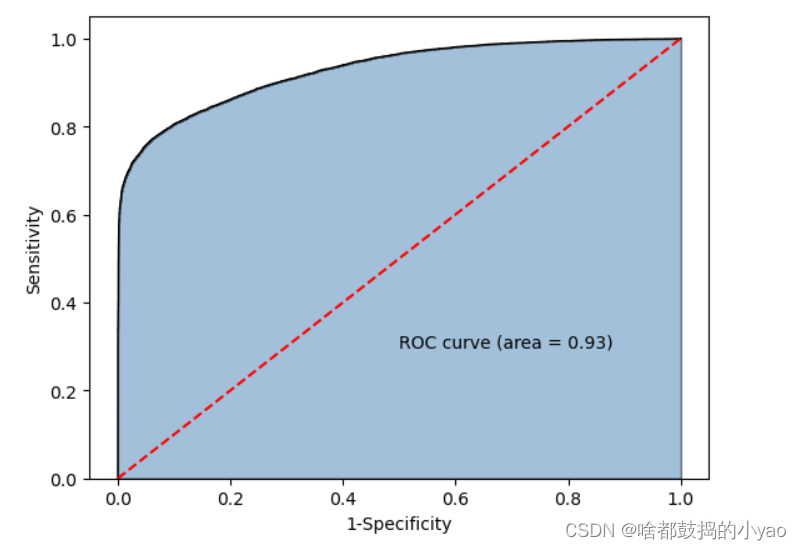
5. KS曲线
# 调用自定义函数,绘制K-S曲线
plot_ks(y_test = y_test, y_score = y_score, positive_flag = 1)
输出:
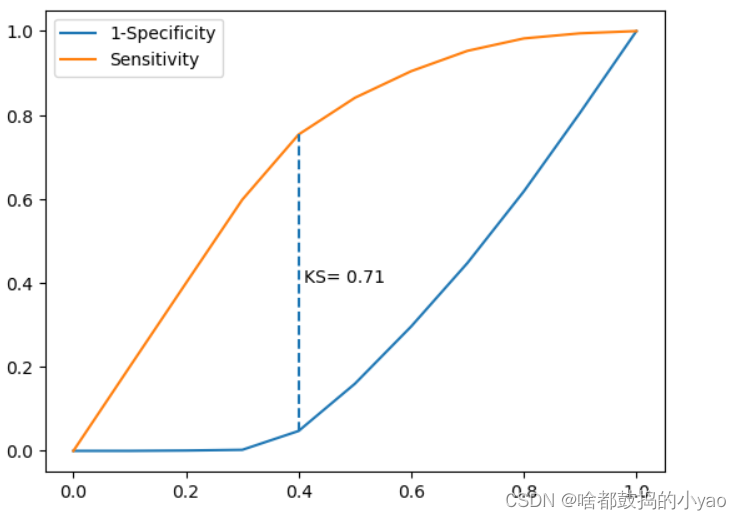
总代码:
# 导入第三方模块
import pandas as pd
import numpy as np
import matplotlib.pyplot as plt
from sklearn import model_selection
from sklearn import linear_model
from sklearn import metrics
# 0.自定义绘制ks曲线的函数
def plot_ks(y_test, y_score, positive_flag):
# 对y_test重新设置索引
y_test.index = np.arange(len(y_test))
# 构建目标数据集
target_data = pd.DataFrame({'y_test':y_test, 'y_score':y_score})
# 按y_score降序排列
target_data.sort_values(by = 'y_score', ascending = False, inplace = True)
# 自定义分位点
cuts = np.arange(0.1,1,0.1)
# 计算各分位点对应的Score值
index = len(target_data.y_score)*cuts
scores = np.array(target_data.y_score)[index.astype('int')]
# 根据不同的Score值,计算Sensitivity和Specificity
Sensitivity = []
Specificity = []
for score in scores:
# 正例覆盖样本数量与实际正例样本量
positive_recall = target_data.loc[(target_data.y_test == positive_flag) & (target_data.y_score>score),:].shape[0]
positive = sum(target_data.y_test == positive_flag)
# 负例覆盖样本数量与实际负例样本量
negative_recall = target_data.loc[(target_data.y_test != positive_flag) & (target_data.y_score<=score),:].shape[0]
negative = sum(target_data.y_test != positive_flag)
Sensitivity.append(positive_recall/positive)
Specificity.append(negative_recall/negative)
# 构建绘图数据
plot_data = pd.DataFrame({'cuts':cuts,'y1':1-np.array(Specificity),'y2':np.array(Sensitivity),
'ks':np.array(Sensitivity)-(1-np.array(Specificity))})
# 寻找Sensitivity和1-Specificity之差的最大值索引
max_ks_index = np.argmax(plot_data.ks)
plt.plot([0]+cuts.tolist()+[1], [0]+plot_data.y1.tolist()+[1], label = '1-Specificity')
plt.plot([0]+cuts.tolist()+[1], [0]+plot_data.y2.tolist()+[1], label = 'Sensitivity')
# 添加参考线
plt.vlines(plot_data.cuts[max_ks_index], ymin = plot_data.y1[max_ks_index],
ymax = plot_data.y2[max_ks_index], linestyles = '--')
# 添加文本信息
plt.text(x = plot_data.cuts[max_ks_index]+0.01,
y = plot_data.y1[max_ks_index]+plot_data.ks[max_ks_index]/2,
s = 'KS= %.2f' %plot_data.ks[max_ks_index])
# 显示图例
plt.legend()
# 显示图形
plt.show()
# 1.读取数据与训练
sports = pd.read_csv(r'D:\pythonProject\data\Run or Walk.csv')
# 提取出所有自变量名称
predictors = sports.columns[4:]
# 构建自变量矩阵
X = sports.loc[:,predictors]
# 提取y变量值
y = sports.activity
# 将数据集拆分为训练集和测试集
X_train, X_test, y_train, y_test = model_selection.train_test_split(X, y, test_size = 0.25, random_state = 1234)
# 利用训练集建模
sklearn_logistic = linear_model.LogisticRegression()
sklearn_logistic.fit(X_train, y_train)
# 返回模型的各个参数(截距项和偏回归系数)
# print(sklearn_logistic.intercept_, sklearn_logistic.coef_)
# 模型预测
sklearn_predict = sklearn_logistic.predict(X_test)
# 2.混淆矩阵
cm = metrics.confusion_matrix(y_test, sklearn_predict, labels = [0,1])
Accuracy = metrics._scorer.accuracy_score(y_test, sklearn_predict) # 模型覆盖率
Sensitivity = metrics._scorer.recall_score(y_test, sklearn_predict) # 正例覆盖率
Specificity = metrics._scorer.recall_score(y_test, sklearn_predict, pos_label=0) # 负例覆盖率
# 3.ROC曲线
# y得分为模型预测正例的概率
y_score = sklearn_logistic.predict_proba(X_test)[:,1]
# 计算不同阈值下,fpr和tpr的组合值,其中fpr表示1-Specificity,tpr表示Sensitivity
fpr,tpr,threshold = metrics.roc_curve(y_test, y_score)
# 绘制面积图
plt.stackplot(fpr, tpr, color='steelblue', alpha = 0.5, edgecolor = 'black')
# 添加ROC曲线的轮廓
plt.plot(fpr, tpr, color='black', lw = 1)
# 添加对角线
plt.plot([0,1],[0,1], color = 'red', linestyle = '--')
# 显示图形
plt.show()
# 4.KS曲线
# 调用自定义函数,绘制K-S曲线
plot_ks(y_test = y_test, y_score = y_score, positive_flag = 1)

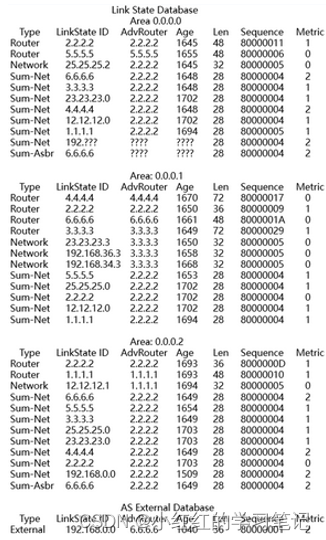
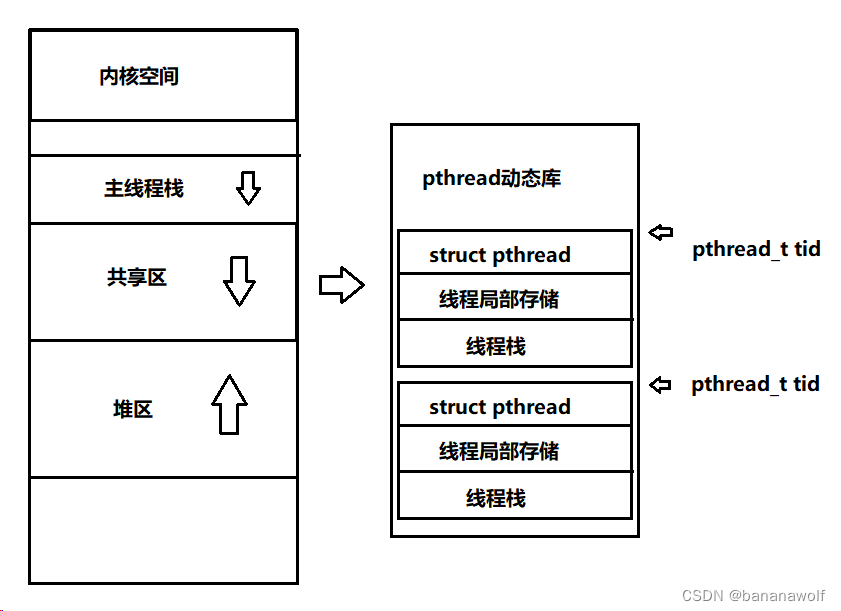
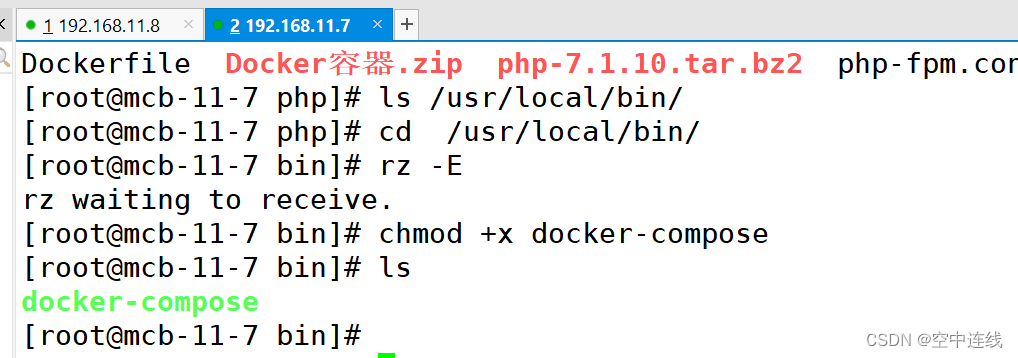

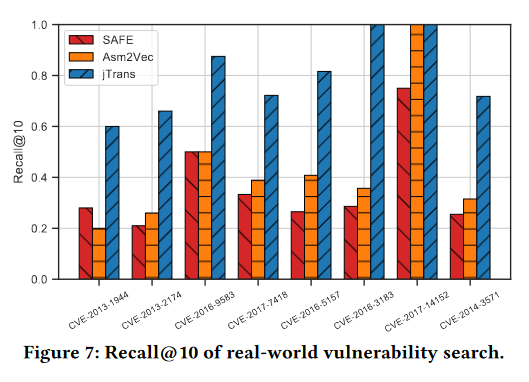




![【Linux】-网络请求和下载、端口[6]](https://img-blog.csdnimg.cn/direct/dae88422d4074db2b78e246cd6f5e0cf.png)

